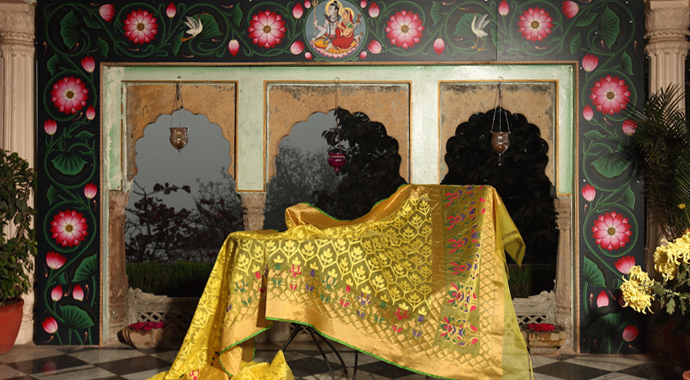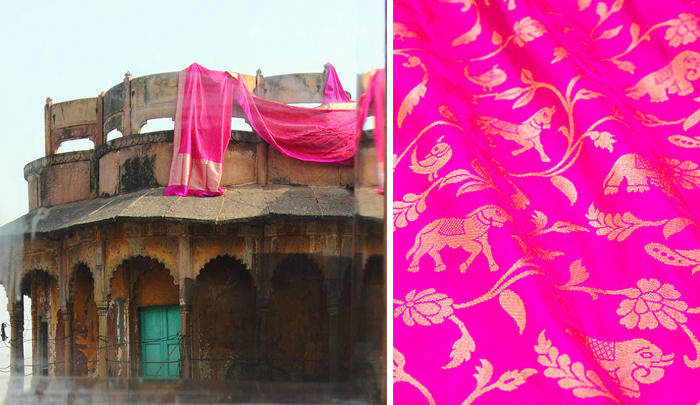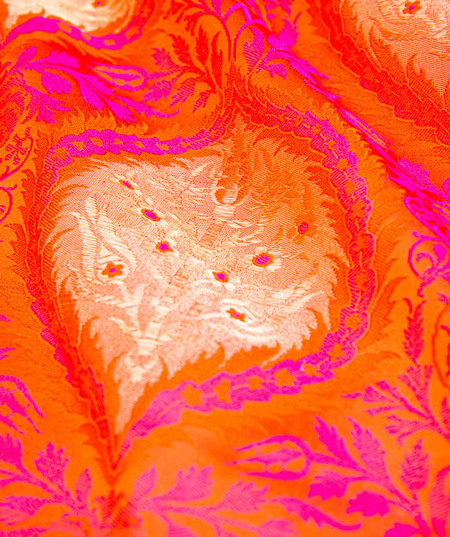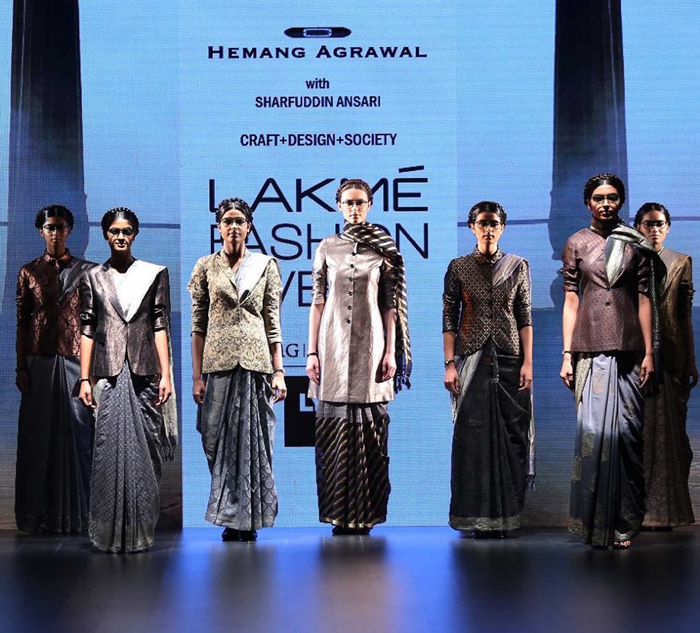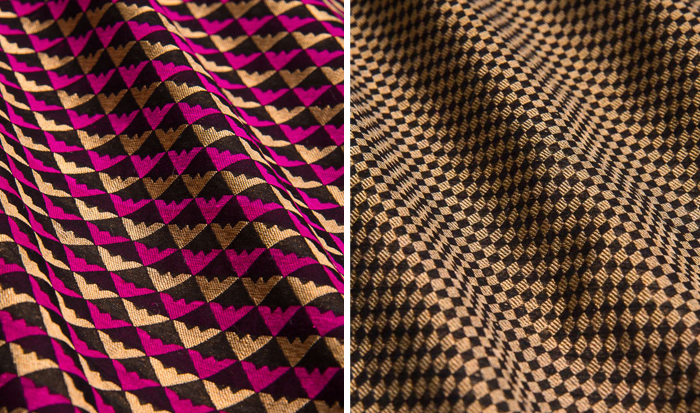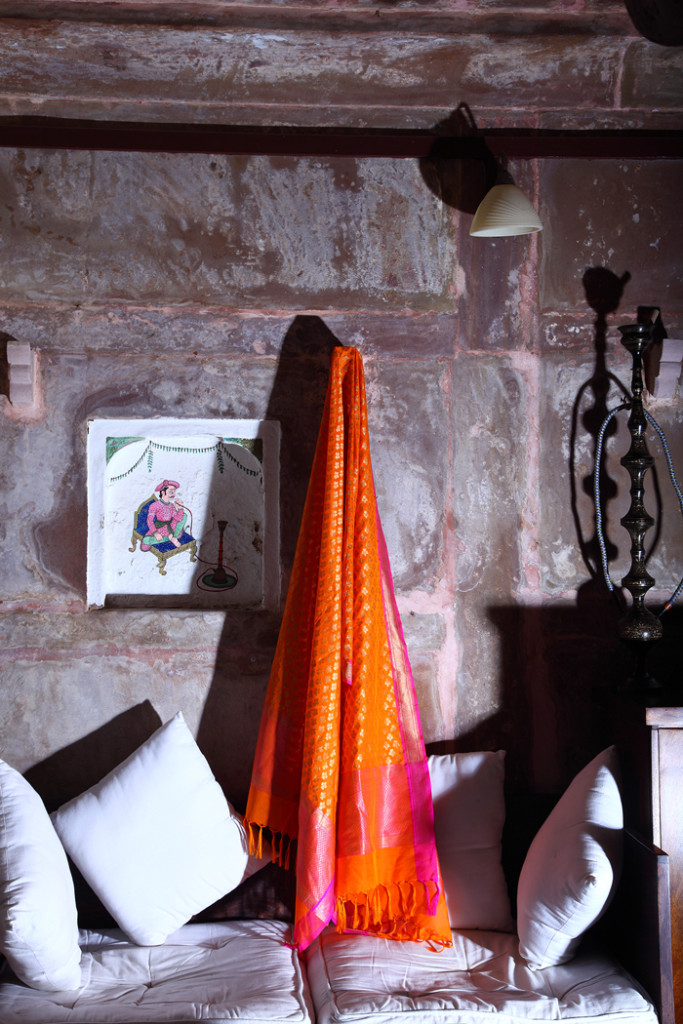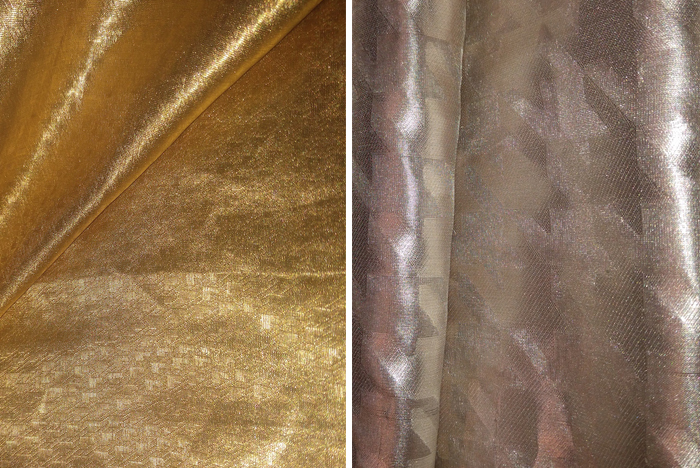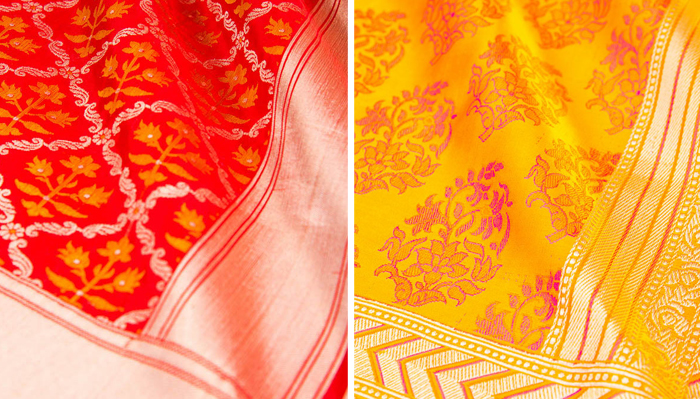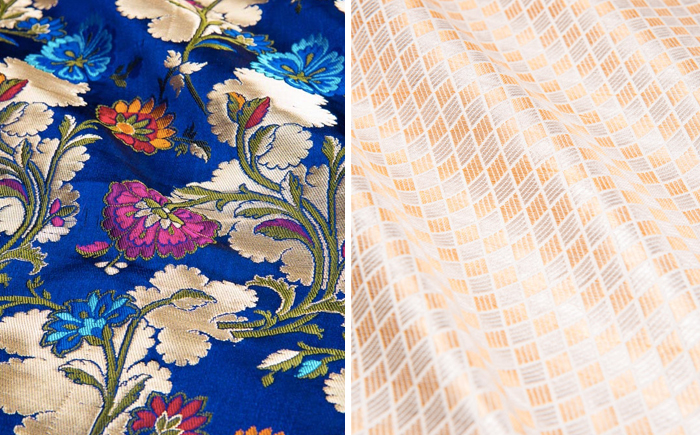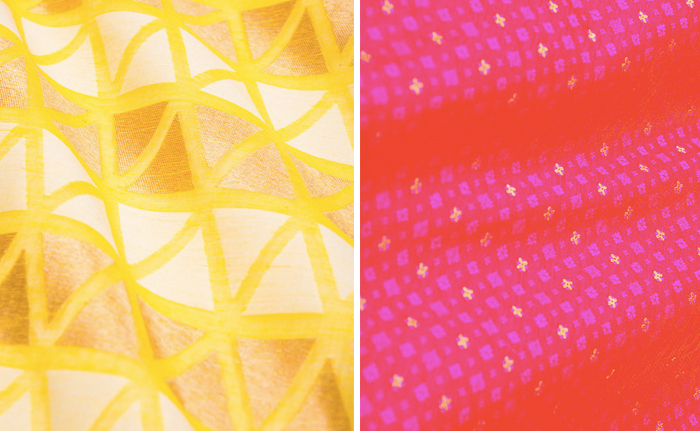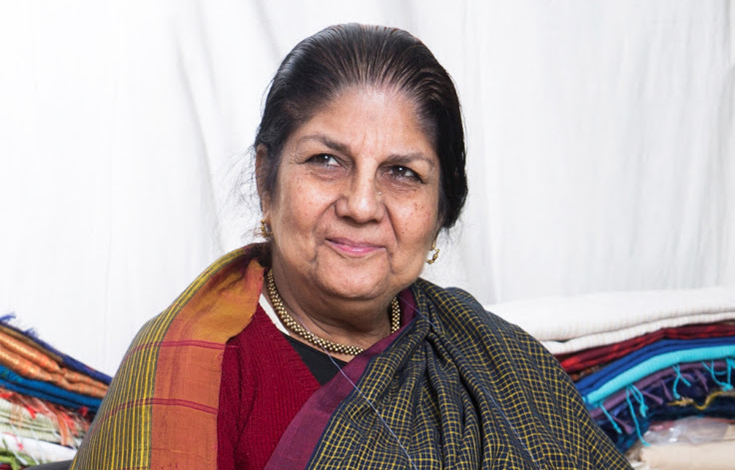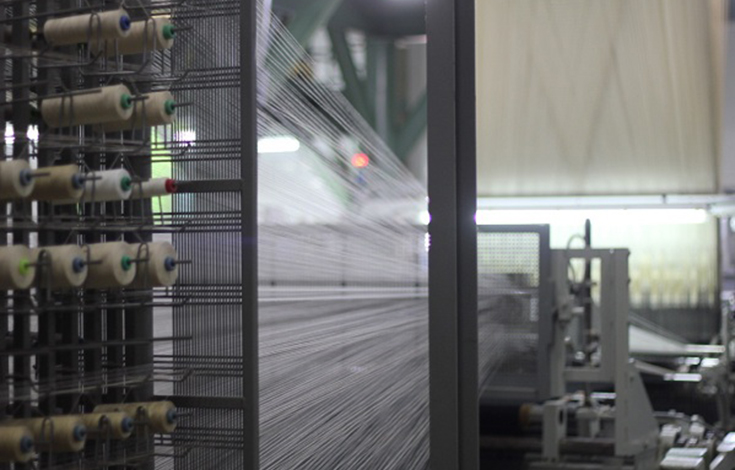As Creative Director of The Surekha Group, Hemang Agrawal steers the four-decade-old textile business with an acute understanding of design and trade. His influences within the textile world inform his extensive insight; they include designer Rajesh Pratap Singh, textile historian Rahul Jain and, essentially, the city of Benares.
The beginning > Benares, besides being my birthplace, is also my most favourite city in the world. I love the vibrance, culture, architecture, people, history and obviously the textiles here. It’s difficult for me to quantify the extent of its influence but it has coloured my philosophy – design and otherwise. I grew up surrounded by handwoven silks since my father owned a textile business in the old city of Benares. The textiles, besides providing a vivid backdrop to our gully-cricket, also ensured that my two brothers and I could tell magenta from fuchsia quite early in our lives. But as each of us studied business in school and college, our creative genes lay dormant for the longest time. In the late 1990s, fashion in India was beginning to be taken seriously as a profession and so I decided to study fashion design at the National Institute of Fashion Technology (NIFT), Mumbai, in 1998.
Above: images | A sari against a backdrop of Benares, image: Anand Gautam; Shikargah brocade
The three years at NIFT, with an eclectic mix of batchmates and some amazing teachers, were the most formative and definitive years in building my design philosophy. I finished amongst the top of the class with an award for textile and surface development. NIFT also offered me admission and a small scholarship for a Masters program in fashion at the Nottingham Trent University but my fascination with handwoven patterned textiles had begun to take root.
I decided instead to return to Benares to study at a Weavers Service Centre along with several weavers and artists who were associated with my father.
Initially, when I moved back, I wanted to learn the basics of handloom weaving and start a fashion line. After barely a few months in Benares, I attended a talk by Padma Shri Rahul Jain, the foremost textile historian and revivalist of India. He spoke about Safavid, Persian and Mughal drawloom patterned textiles and also explained in great detail how sophisticated and innovative Benares has been as a textile weaving centre for the past several centuries.
Above: image | Mughal brocade on mulberry silk
I was so intrigued by what I saw and heard at the talk that it became abundantly clear that textiles were not just the means to an end but a world in themselves. From that day on, Rahul ji is someone I am deeply indebted to for his help, guidance and mentorship.
The Surekha Group > Our textile business, The Surekha Group, concentrated on traditional sarees for the first 25 years. After I joined in 2003, we ventured into yardages, made-ups, wraps and garments. Since these were new verticals, I took care of design as well as business development. Over the years, they have become our strongest division. My father is still involved and is hands-on in the business; textile development is something he is extremely passionate about.
The Surekha Group has two divisions – B2B and B2C. The former constitutes our entities Surekha Overseas, Surekha Arts, Vintage Benares Handlooms Pvt. Ltd. and Monsoon Inc. which are involved in manufacturing, bulk sales and export. Our B2B customers include corporate retail chains as well as commercial and designer brands. The B2C division is involved with manufacturing, curation and retail of textiles through our website, Holy Weaves, a store in Benares as well as through a few marketplace e-tailers. My eponymous fashion label, Hemang Agrawal started in 2014, is a recent addition to this division. I wouldn’t call myself a fashion designer but we create textiles, which find their natural manifestation in the form of fashion garments.
Above: image | The Holy Smoke collection at Craft + Design + Society show at Lakme Fashion Week Summer Resort 2016, image courtesy: Lakme Fashion Week
When one thinks of Benarasi textiles one imagines vibrant colours, intricate patterns and rich brocading. Several of our customers are interested in this look and a large part of what we do caters to that requirement. However, the rich colours and patterns are only incidental to the highly advanced technique which Benares handlooms offer.
We do not stick to or break away from an established vocabulary just for its sake. Often a collection demands muted colours and simplistic or no patterning in textiles, so we design and weave accordingly. The ‘Holy Smoke’ collection, under Hemang Agrawal, is an example. It featured a muted palette, light fabrics and mostly geometric patterns in sarees which we showed at Lakme Fashion Week Summer Resort 2016.
Above: images | Patterned silk with zari and meena; Geometric brocade in mulberry silk
Diverse markets > When we develop textiles for other designers or brands it is important to understand their aesthetics, ethos and customer.
We have noticed that Indian designers tend to focus on the patterns and motifs whereas Western designers almost always emphasise texture, drape and hand feel. With Indian collaborations there is little consistency between seasons but there is absolute freedom with motifs and patterns. Whereas with European designers, we get a smaller playing field for design ideas but each one is explored to perfection and distinctive iterations of a singular concept spillover across seasons.
Then there are Japanese designers who are a different ball game altogether. Their aesthetics, approach to design, idiosyncrasies – everything is crazy. They are the most challenging but most fun bunch of people to work with.
The textiles which we sell under our retail labels, quite frankly, we design as we like to and hope that they connects with someone. In value terms, our handwoven pure silk brocades are the ones for which we get most orders. In terms of quantity, handwoven silk tabbies and silk-cotton jacquard cutworks woven both on fly-shuttle handlooms and power looms constitute the maximum yardages. Our USP for these commodities are our designs, patterns and quality. Our signature, however, is the contemporary twist we add to traditional textiles although these textiles cater to a much smaller audience and are not high volume.
Above: image | A stole against a backdrop of Benares, image: Anand Gautam
The trade-off > In textile-based businesses, several items tend to become commodity items and that used to bother me. These textiles obviously help in capacity utilisation but there isn’t much scope for creativity. For example, the silk tabbies, in which we have around six different weights and hundreds of colours or the ecru silk-cotton cutworks which we make in more than 50 designs. I used to feel apologetic about that part of my business but over the years I’ve realised that it is this part which runs our looms, keeps the weavers well remunerated and also gives us elbow room to create textiles we love.
Experimental textiles cannot bring volume or even break even financially so without the commodity items to subsidise them, we wouldn’t be able to invest in these. I would say we have now found a sweet spot between our top-lines as well as work which satiates our creative urges.
Above: images | All-metal fabric with golden metallic yarn; All-metal houndstooth fabric with silver metallic yarn
I feel good about several textiles that we have been able to create over the years, especially metal-based ones, for which I have yet to come across visually or functionally comparable specimens.
The metallic yarns (zari) have traditionally been limited to extra-weft ornamentation as the yarn is technically unmanageable in the warp and structurally unsuitable for the body weft. However in our metallic textile we only use silver/gold based metallic yarn for the body warp, body weft as well as the extra warp/weft which makes the design. Our current collection is entirely in this fabric and we will soon present it under the eponymous label.
People > Rajesh Pratap Singh is someone I immensely respect and admire, both for his work and the person he is. From him I’ve understood how to unwaveringly follow one’s conviction. I find myself extremely lucky to have learnt from him and to know him as a dear friend.
Above: images | Details: Banarasi karhuan jaal silk sari; Tanchui Mughal boota silk sari
I would attribute my approach of being procedure-oriented rather than visual-centric entirely to Rajesh. The importance of focusing on details and process couldn’t be overemphasized. This is one of the many things I have absorbed from him over several years.
Other people who I admire or have been deeply influenced by include my father for instilling in me the importance of goodwill and beneficence; and the late Ms. Rebecca Philips, a senior faculty at NIFT Mumbai, for teaching me the importance of hard work in fashion and the pitfalls of the industry’s trappings. Rahul Jain for ingraining the value of perfection in process, the significance of deference and fairness when working with a weaver and responsibility towards giving back to the community. Finally, Mrs. Ritu Kumar for highlighting the sanctity of crafts, artisans, traditions and – a vital trait required in dealing with each – patience.
Above: images | Gyasar brocade in multicolour meena; Sona Rupa chaudani silk
Looking forward > Owing to the burgeoning domestic market, which is price sensitive, I see a huge potential of growth in the commodity items. Because this segment is moving towards commercial brands and chain retailers, our quality control and design novelty in basic textile items gives us an edge and we are relatively well placed.
I am however slightly concerned about the luxury segment on two accounts. First, a marked slowdown of demand and second, the lack of young skilled weavers in the handloom sector. During such slowdowns, individual companies who invest in design and quality do remain immune and even grow in the medium term but if the situation doesn’t improve in the long run the conditions of the market affect everyone. I hope both the demand and supply slowdown in the luxury segment is a short term affair.
Above: images | Geometric patterning in mulberry silk; Tanchui with zari booti
Digital and other references > I consider Issey Miyake an artist and absolutely love his work. I also admire Indian miniatures, Jamini Roy, and contemporary Indian artist Jitish Kallat. Sometimes I enjoy artworks by new-medium artists like Banksy and young Japanese artists like Haroshi and Riusuke Fukahori. I enjoy TV and movies set around the world wars, and also works by Tarantino, Nolan and Fincher. I squander hours on American TV dramas.
The internet while hugely helpful in finding references, has taken away the joy of arduously researching and assessing information, for which, I love libraries and museums. I am a voracious reader; all forms of written word inspire me. I like selected works of Rushdie, Murakami, Premchand as well as poetry by Bashir Badr and Suryakant Tripathi ‘Nirala’.
Work history >
Hemang Agrawal – Co-founder, Benares. 2015 – present
Holy Weaves – Co-founder, Benares. 2014 – present
The Surekha Group – Creative Director, Benares. 2004 – present

